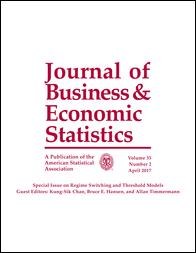
Lucas, A., Schaumburg, J. and Schwaab, B. (2019). Bank Business Models at Zero Interest Rates Journal of Business and Economic Statistics, 37(3):542--555.
-
Affiliated authors
-
Publication year2019
-
JournalJournal of Business and Economic Statistics
We propose a novel observation-driven finite mixture model for the study of banking data. The model accommodates time-varying component means and covariance matrices, normal and Student{\textquoteright}s t distributed mixtures, and economic determinants of time-varying parameters. Monte Carlo experiments suggest that units of interest can be classified reliably into distinct components in a variety of settings. In an empirical study of 208 European banks between 2008Q1–2015Q4, we identify six business model components and discuss how their properties evolve over time. Changes in the yield curve predict changes in average business model characteristics.